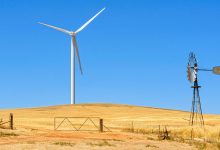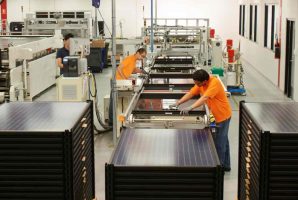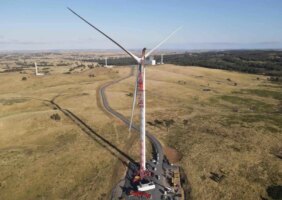The level of curtailment of large scale wind and solar farms fell significantly in the second quarter, even as the two technologies set new production levels over the last three months.
The latest Quarterly Energy Dynamics Report issued by the Australian Energy Market Operator – a document emerging as a key reference point for the state and pace of the energy transition in Australia – says curtailment of wind and solar more than halved to 3.2 per cent of output from 6.9 per cent in the first quarter.
The main reason for this improvement was the inverter solution that was found to solve potential “voltage” problems from five solar farms in Victoria and NSW, an issue that saw their output curtailed by half from early September to late April.
 There was also a lack of any significant “separation” events that caused a large amount of curtailment in the first quarter (green in the graph above), and the lack of any network events.
There was also a lack of any significant “separation” events that caused a large amount of curtailment in the first quarter (green in the graph above), and the lack of any network events.
Even “voluntary” curtailment as a result of negative prices – some wind and solar farms are required to turn off when prices go negative, others do it by choice – despite the increase in the number of such events. AEMO suggested that 90 per cent of the negative spot prices were limited to minus $50/MWh or above. If the price falls further, then more curtailment occurs.
The only increase in the levels of curtailment came from “system strength” issues – which occurred in South Australia, and to an increasing extent in north Queensland.
This trend may also be reversed in coming years as more “synchronous condensers” are added to the grid, which should result in less gas generation needed to provide the system strength, and more opportunities for wind and solar farms to perform at full output.
AEMO noted two notable wind and solar generation records were achieved in the latest quarter, when overall output rose by an average 454MW to 2,730MW (that’s average output over the three months, even when the sun don’t shine and the wind don’t blow).
On April 11, at 1130, the main grid recorded its highest share of wind and solar energy in “operational” demand on the National Electricity Market. This reached 34 per cent. It’s important to note that this does not include rooftop solar.
On May 11, at 2230 AEST, the highest wind output was recorded of 4,996MW.
Grid-scale solar generation increased by 158MW on average compared to the same quarter last year, with the largest increases occurring in Queensland (+100MW) and New South Wales (+42MW).
In Queensland, this was driven by a combination of ramping up of newly installed capacity, as well as higher solar irradiation (+3.5%),” AEMO said.
In New South Wales, increased output was mainly due to ramping up of newly installed capacity and partially by new capacity additions (Goonumbla Solar Farm, 70MW). But this was offset by lower solar irradiation (-4%).
Average wind generation this quarter reached 2,140MW, 296MW higher than the same quarter last year, driven by nearly commissioned projects in Victoria such as Bulgana,, Cherry Tree and the Elaine wind farms.
In Victoria, despite large capacity additions, average wind output in Victoria only increased by 98 MW compared to the same quarter last year, mainly due to lower wind speeds across the state. Queensland’s increased output (97 MW) was mainly driven by the continued ramp up of Coopers Gap.











